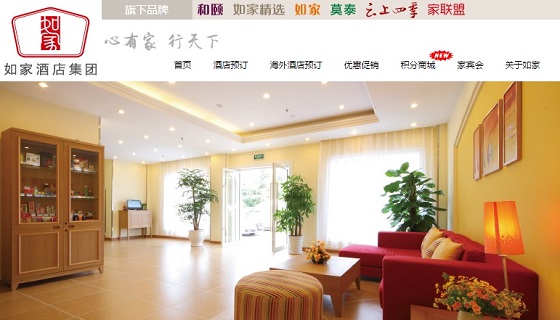ChinaTravelNews, Ritesh Gupta – The pace with which OTAs have stepped up their accommodation reservation volume, coupled with consolidation featuring Ctrip, eLong and Qunar in this sector, it means the dynamics of distribution landscape is set to witness new action.
OTAs aren’t now expected to flood the market with aggressive promotional tactics. In fact, Ctrip’s co-president and COO, Jane Sun, has already indicated that competition based solely on pricing has proven to be “non-sustainable and disruptive” to the whole industry. OTAs believe that doing away with “irrational” competition, will contribute to the bottom-line and improve margins. Also, after sharing inventory with eLong “in the backend”, the plan is to capitalize on alliance with Qunar.
As for volume, the team at Ctrip managed to increase it accommodation reservation volume 50% y-o-y in Q3. For its part, Qunar asserts that momentum for hotel booking volume growth has been robust since the team started building its direct hotel network in Q1 last year. The team can handle a daily mobile volume of over 250,000 hotel room nights stayed on certain days. As we highlighted recently, Qunar’s “mobile plus hotel direct” focus remains a strong growth story. Qunar believes its growing mobile user base as well as the strengthening of its hotel content will pave way for further boost in the “commission rate” of its hotel business.
Impact of consolidation
Hotel companies, especially independent hotels and smaller chains, need to keep a vigil on how online traffic is being monetized by OTAs, and the possible repercussions on the commercial dealing between hotels and OTAs.
Around mid-2015 Qunar shared that it almost tripled volume it brings to each hotel.
So are hotels ready for a higher commission rate?
“OTA commission has not increased yet,” said Jun Miao, Senior VP of Operation and Sales, Homeinns.
However, Miao admits that from hotels’ perspective, the consolidation among OTAs will “partly increase pressure when negotiating price with OTAs.

Miao mentioned that the impact would be more profound on small/ medium-size hotels. “Due to the lack of self-owned channels, (these) hotels depend more on OTAs to supply customers. For them, the biggest possibility post OTA consolidation will be increase in commission.”
Overall, Miao expects OTAs to be more unified and their ability to bargain with hotels will also improve. “However, (the alliances) will reduce vicious competition among OTAs, thus stabilizing pricing, which, in fact, is good for Homeinns to protect the interests of members (loyalty program participants).” Guests can join Homeinns’ membership via app, web etc. and members receive exclusive offers from time to time. “We may offer OTAs equal treatment as our members. However, we will keep a baseline on members’ interests and reserve the best interests for our members,” added Miao, not explaining further.
For its part, for promotional activities, Homeinns group takes decisions according to the situation in dull and boom periods. “Generally, during dull periods, in consideration of flow volume, we loosen the control over rooms properly for OTAs for some activities to attract customer flow. However, in most cases, we protect the interests of (loyal) members and reduce the weight of OTA,” shared Miao.
Understanding each OTA’s strength
Each OTA is different and is positioned differently. “We use different OTA channels for sales when differentiating market and product positioning,” said Miao.
Miao explained Ctrip has advantage over others in the high-end, mid-end hotels users segments. “So our middle and high-end brands Homeinn Plus and Yitel show good sales results on Ctrip. Users of economy brands and second/ third-tier cities generally come from eLong and Qunar. For third and fourth-tier and even fifth tier cities, the package sales in Qunar and Meituan have better results.”
But, as we go forward, hotels companies would need to dig deeper to plan their distribution mix. Qunar’s CFO Yilu Zhao indicated that the company has stepped up its game in the hotel business, not just restricting itself to the low-end segment. “…in the four-, five-star hotel segment, the volume continued its triple-digit growth to a total of 6.2 million room nights stayed in the quarter representing 28% of our total hotel volumes,” Zhao shared during the company’s Q3 earnings call. Also, hotels would need to make their mobile portfolio, especially their respective apps compelling, since OTAs are getting stronger in this arena.
Diligent planning
Hotel companies need to plan assiduously on various counts:
• Study the market: As Daryl Lee, Regional Vice President, GTA says China is a combination of many markets. The tertiary segment has still got a low Internet penetration and low propensity to spend online, then secondary cities have relatively higher penetration and still low desire to transact online, and finally the primary market is witnessing a steady flow of digital transactions, so say the place where the likes of Ctrip.com thrive. Follow closely the foray of each OTA into different tier of cities, and their capability as a source market.
• Revenue management: A reason behind working with an OTA or any indirect partner is to reach out to those who the hotel wouldn’t have been able to target. The key lies in balancing out the mix of direct and indirect distribution. “Here the first critical part is forecasting. Right from data collection, to analysis and finalizing the pricing structure, a team needs to go beyond just the requirement of room nights and relating it with the distribution mix. One should also look at the room types and length of stays in detail while forecasting,” explained a source. Secondly, the hotel needs to look at their market segment based pricing structure minutely. There is a need to go beyond the non-contracted public rate aspect, and hotels should protect contracted rates and set up a discount rate fence. An entity can have different discount rates, but without any fence be it for advance purchase component or the minimum length of stays, it just doesn’t make any sense to expect a balanced distribution mix in today’s scenario.
Even if OTAs plan heavy discounting in order to grab market share, a hotel company can count on its forecasting to combat concerns pertaining to yield management.
According to experts, the yardstick for being accurate with forecasting is considered to plus or minus 5%.
• Bank on direct distribution: Homeinns asserts that it has favourable channel mix (in Q3, the team mentioned that 90% of “our customer is going to our direct line”) and stable repeat customer base. The group had a total of 47 million unique non-corporate members under its frequent guests program at the end of the last quarter. “Homeinns has great breadth and depth currently, in which case the self-owned channels allow us grasping customer sources better, thus increasing the adhesiveness of (loyal) members,” says Miao.
“Using self-owned channels can reduce the cost, so in recent years, we have been laying particular stress on the development of self-owned channels, which is a new sales idea. In the future, as our central booking system becomes increasingly improved, self-owned channels will develop better, which will be very helpful in the long run,” added Miao.
Collaboration
Anyone who can sell the way China’s intermediaries do are able to shape up their selling platforms. It’s virtually a B2B2C model today.
So how new platforms owned by hotel companies to let independent hotels/ smaller hotel chains sell their rooms are shaping up?
Miao says Homeinns has such a platform. JIALIANMENG (jlm.homeinns.com) provides a platform for small/ medium-size chain hotels to help find modes of management, operations and development rapidly.
“It’s hard for small brands to improve their management systems, including customer source management, employee training, back-office support, and so on, independently due to limited resources and space. After decades of years of development and accumulation, Homeinns has established an improved hotel management system,” says Miao.




